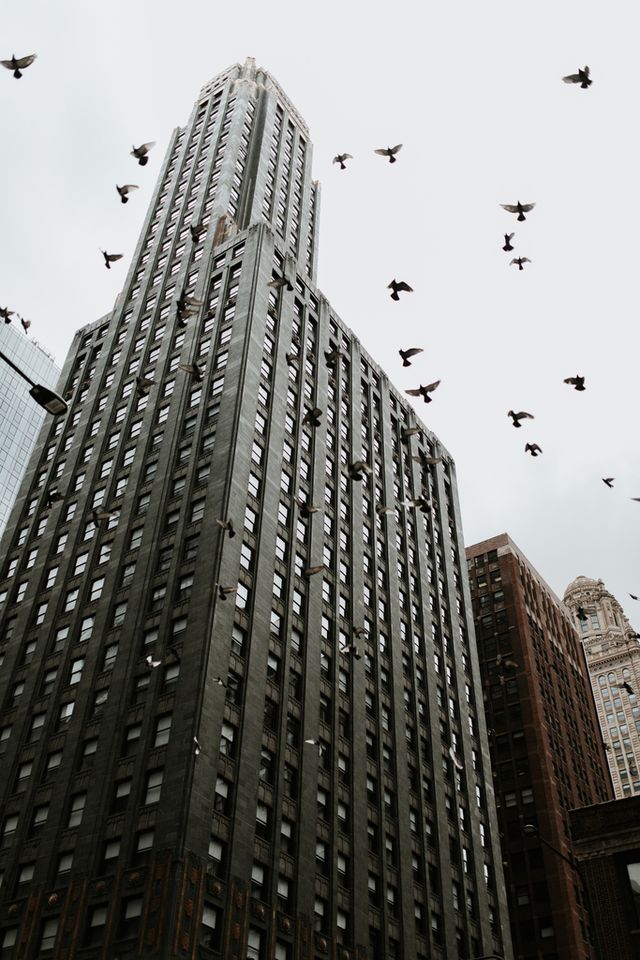Securing Buildings from Birds - Why and How to Bird-Proof
- Category: Pics |
- 12 Feb, 2024 |
- Views: 557 |

Birds are a fascinating part of our natural environment, but when they invade buildings, they can become a significant nuisance and cause various issues. From structural damage to health hazards, bird infestations can pose significant challenges for property owners. However, by implementing effective bird-proofing measures, we can protect buildings and maintain a safe and comfortable environment for occupants. This article will explore why bird-proofing is essential and provide insights into how to secure buildings from birds.
Why Bird-Proof Buildings
Property Damage: Birds can cause extensive damage to buildings. Their nests, droppings, and debris can clog drains, gutters, and ventilation systems, leading to water damage, corrosion, and blockages. Bird droppings contain acidic compounds that can corrode building materials, including metal surfaces and stonework. Over time, this can result in structural deterioration and costly repairs.
Health Risks: Birds and their droppings carry various pathogens, including bacteria, fungi, and parasites. These can contaminate the air and surfaces, posing health risks to building occupants. Some diseases associated with bird droppings include histoplasmosis, cryptococcosis, and salmonellosis. Inhaling airborne particles from dried bird droppings can trigger respiratory issues, especially for individuals with pre-existing conditions like asthma.
Maintenance and Cleaning Costs: Regular cleaning and maintenance to remove bird droppings, nests, and debris can be time-consuming and expensive. The accumulation of droppings can also make surfaces slippery, creating potential slip-and-fall hazards for people accessing the building.
Aesthetics and Reputation: Bird droppings can deface buildings and give them an unattractive appearance. This can negatively impact the aesthetic appeal of a property and harm its reputation. Maintaining a clean and bird-free environment is essential, particularly for commercial properties where image and customer perception matter.
How to Bird-Proof Buildings
Identify Bird Entry Points: Conduct a thorough inspection of the building to identify areas where birds can enter or nest. Common entry points include open vents, gaps in roofing or siding, broken windows, and uncapped chimneys. By understanding how birds access the building, you can focus your bird-proofing efforts more effectively.
Install Physical Barriers: Physical barriers are an effective way to prevent birds from accessing buildings. Options include bird netting, bird spikes, bird wires, and bird slopes. Bird netting is typically used to cover larger areas such as courtyards or building facades, while bird spikes are useful for preventing perching on ledges, beams, or signs. Bird wires and slopes create an uneven surface that birds find uncomfortable, discouraging them from landing and roosting.
Seal Openings and Gaps: Use appropriate sealants and materials to close off any gaps or openings that birds can exploit. Ensure that vents, chimneys, eaves, and other potential access points are properly screened or sealed. It is crucial to choose materials that are durable and resistant to bird damage.
Install Deterrents: Visual and auditory deterrents can help repel birds from the building. Reflective devices such as scare tape, shiny objects, or predator decoys can create a visual disturbance that discourages birds from approaching. Auditory deterrents like ultrasonic devices or sound-emitting systems can emit distress calls or predator sounds, making the area less attractive to birds.
Create Bird-Friendly Landscaping: Modify the surrounding landscape to make it less appealing to birds. Trim trees and shrubs near the building to reduce perching and nesting opportunities. Remove any sources of food, such as open garbage containers or bird feeders, that may attract birds to the area.
Seek Professional Assistance: Bird-proofing can be a complex task, and consulting with professionals experienced in bird control is advisable. They can provide expert advice on effective bird-proofing strategies and ensure compliance with local regulations and humane practices.
By implementing these bird-proofing measures, property owners can effectively mitigate the risks and problems associated with bird infestations. It is essential to address bird issues promptly and maintain a proactive approach to prevent future problems.
Maintain Regular Cleaning and Maintenance: Even with effective bird-proofing measures in place, it is essential to maintain regular cleaning and maintenance routines. Bird droppings and debris should be promptly removed to prevent accumulation and potential damage. Blocked gutters, drains, and ventilation systems should be cleared to avoid water damage and ensure proper functioning. Regular inspections will help identify any new bird entry points or signs of infestation that may require additional bird-proofing measures.
Educate and Involve Occupants: Building occupants play a crucial role in bird-proofing efforts. Educate them about the importance of maintaining a bird-free environment and the impact of their actions. Encourage them to report any bird-related issues promptly and provide guidelines for proper waste disposal to minimize attractants. By involving occupants in the bird-proofing process, you create a collaborative and responsible approach to maintaining a bird-free building.
Follow Local Regulations and Best Practices: When implementing bird-proofing measures, it is essential to comply with local regulations and guidelines. Some bird species are protected by law, and it is crucial to adopt humane bird control methods that do not harm or kill birds. Research local regulations and consult with bird control professionals to ensure your bird-proofing efforts align with best practices and legal requirements.
Monitor and Adapt: Bird behavior and patterns can change over time, and new challenges may arise. Continuously monitor the effectiveness of your bird-proofing measures and make necessary adjustments. Regularly inspect the building for any signs of bird activity or potential entry points. Stay informed about new bird control technologies or techniques that may enhance your bird-proofing efforts.
By adopting a comprehensive approach to bird-proofing, including physical barriers, deterrents, maintenance routines, and occupant involvement, you can effectively secure your building from bird infestations. Remember that each building is unique, and the specific bird-proofing measures required may vary depending on the location, bird species, and existing challenges. Seeking professional advice and expertise will ensure the most appropriate and effective bird-proofing strategies are implemented.
In conclusion, bird-proofing buildings is a necessary endeavor to protect structures, occupants, and maintain a hygienic and aesthetically pleasing environment. By understanding the reasons behind bird-proofing and following appropriate measures, property owners can prevent property damage, health risks, and the associated costs of bird infestations. With a proactive and comprehensive approach, we can create bird-free buildings that are safe, functional, and comfortable for all.
Article made by the owner of Rope Access Window Cleaning Sydney - Rope Boys.
Address: 40 Darling St, Glebe NSW 2037, Australia
Phone: +61 402 375 162

